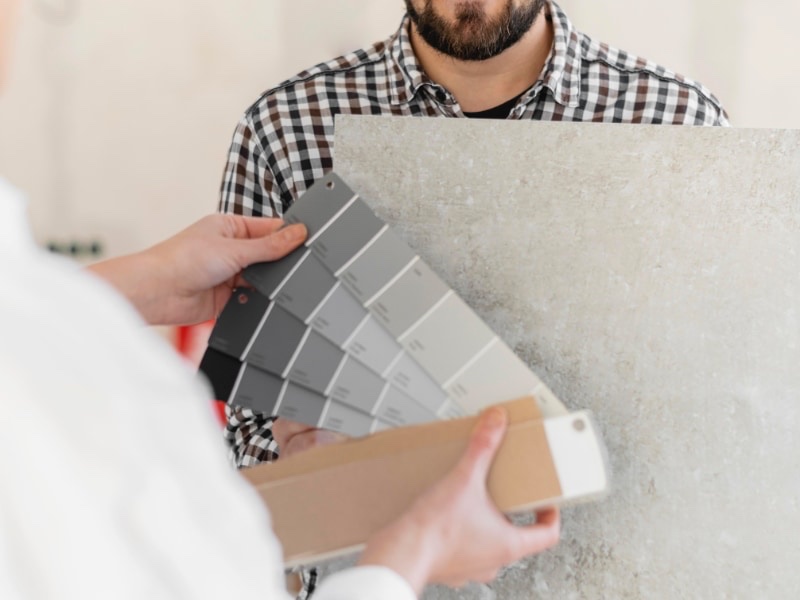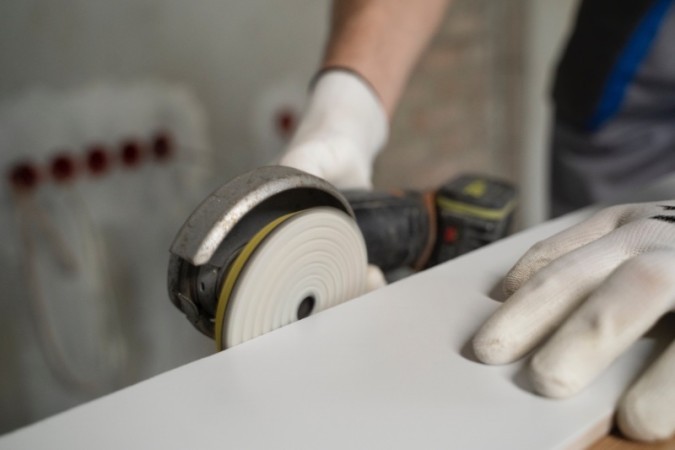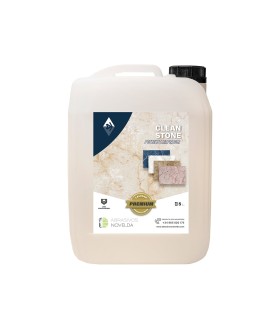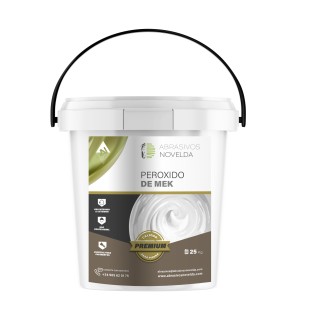Restoring Marble Surfaces: A Complete Guide to Restoring Their Original Beauty
Restoring marble surfaces is essential to maintaining their aesthetics and durability. This material, although resistant, can deteriorate over time due to factors such as wear and tear, humidity and chemicals. The restoration process includes deep cleaning, stain removal, polishing, and sealing. Each of these steps is crucial to restore the marble to its original shine and protection, thus ensuring its longevity.

Importance of Marble Restoration
The restoration of marble is a crucial process to preserve the beauty and durability of this material so appreciated in architecture and decoration. Below are the reasons for restoring marble, as well as the benefits that come from keeping it in optimal condition.
Reasons to restore marble
- Marble can suffer wear and tear over time due to daily use and exposure to external agents.
- Harsh chemicals and moisture can cause damage to the surface of the marble.
- The restoration helps to recover the original beauty and elegance of the marble, enhancing its aesthetic appearance.
Benefits of Keeping Marble Restored
- A restored marble adds aesthetic and economic value to any space where it is located.
- The restored surface of marble is more resistant to future stains and damage.
- Proper maintenance of marble extends its lifespan and preserves its flawless appearance over time.

Deep Cleaning of Marble
Use of pH neutral detergent
To carry out a deep cleaning of marble, it is essential to use a detergent with a neutral pH. This type of product is gentle and will not damage the surface of the marble, ensuring effective cleaning without compromising its integrity.
Recommended tools for cleaning
- Soft cloths
- Soft-bristled brushes
- Non-abrasive sponges
Clean the surface thoroughly
Before proceeding with deep cleaning, it is important to make sure that you clean the surface thoroughly to remove any surface dirt. This will ensure that the cleaning process is more effective and achieves optimal results.
Using baking soda
Baking soda is an excellent ally to remove stains and dirt embedded in marble. You can use it gently by rubbing with a damp cloth to achieve a deeper cleaning in specific areas.
Application of stain remover paste
In case of stubborn stains, a homemade or commercial stain remover paste can be of great help. Apply the paste to the stain, leave it on according to the product's directions and then wipe with a damp cloth to remove it completely.
Avoid abrasive products
It is crucial to avoid using abrasive products, such as acidic or alkaline cleaners, as they can damage the surface of the marble and lead to scratches or discoloration. Always opt for soft, non-abrasive products to ensure material integrity.
3. Removing Stains from Marble
Treatments for light stains
For light stains on marble, there are effective methods you can apply to restore its splendor. Here are two options:
Baking soda and warm water
A mixture of baking soda with warm water can help remove light stains on marble. Apply this paste to the stain and leave it on before rinsing with clean water and drying with a soft cloth.
Homemade stain remover paste
Make a homemade paste with natural ingredients to treat light stains on marble. This option is usually soft and respectful of the surface. Apply the paste to the stain, leave it on and then carefully wipe and dry.
Stubborn stains
For stubborn spots that require more targeted treatment, consider the following:
Specific cleaning products
There are specific products on the market designed to remove stubborn stains on marble. Be sure to follow the manufacturer's instructions to achieve the best results without damaging the surface.
Techniques to remove stubborn stains
When stains are difficult to remove, it is important to use appropriate techniques to protect the marble. Consult with professionals or experts in marble surface care for personalized advice and to effectively treat the most complicated stains.

Marble Polishing
Manual polishing
Manual polishing of marble is a detailed process that requires certain specific tools to achieve a shiny, smooth finish. Below are the necessary tools and the step-by-step technique:
Tools needed:
- Manual polisher
- Emery stone
- Abrasive paste
- Cotton cloth
Step-by-step technique:
1. Pre-cleaning: Make sure the surface is completely clean and dry before starting polishing.
2. Abrasive paste application: Use the hand polisher with the emery stone and abrasive paste, working in small sections.
3. Circular Motions: Perform smooth and steady circular motions to evenly polish the marble.
4. Repeat: Brush the polisher several times over each section until the desired shine is achieved.
5. Final cleaning: Once polishing is complete, wipe the surface with a cotton cloth to remove any abrasive paste residue.
Polishing with machinery
For polishing marble with machinery, it is important to know the different types of polishing machines available and follow a specific procedure to obtain optimal results.
Types of polishing machines:
- High-speed rotary machines
- Orbital Web Polishers
- Floor polishers
Procedure for mechanical polishing:
1. Surface preparation: Be sure to clean and dry the marble thoroughly before starting polishing with machinery.
2. Selecting the right machine: Choose the most suitable polishing machine for the type of marble and the size of the surface to be polished.
3. Application of abrasives: Use the appropriate abrasives according to the condition of the marble, following the manufacturer's instructions.
4. Uniform Polishing: Work the machine evenly over the entire surface to achieve uniform polishing.
5. Clean and check: Once the polishing is complete, wipe the surface to remove any residue and check the final result.
Marble Protection and Sealing
The protection and sealing of marble are fundamental steps to maintain its beauty and resistance over time. The different aspects related to this process are detailed below:
Importance of sealing
Sealing marble is essential to prevent the penetration of liquids and external agents that can cause damage to the surface. By sealing the marble, a protective layer is created that helps preserve its original appearance and prolong its durability.
Types of Sealants
-
Water-based sealants
Water-based sealants are a popular choice due to their easy application and ability to penetrate the surface of the marble, providing effective protection against stains and spills.
-
Solvent-based sealants
Solvent-based sealants are ideal for more porous marble, as they create a durable protective layer that repels liquids and prevents stain absorption. They are especially recommended for high-traffic areas.
Application of the sealant
-
Tools and methods
To apply the sealant, it is advisable to use a sponge applicator or soft cloth to distribute the product evenly on the surface of the marble. The manufacturer's instructions should be followed for best results.
-
Application frequency
How often the sealant should be applied depends on the type of marble and the use of the surface. In general, it is recommended to reseal marble every one to two years to maintain its protection and shine.
Regular Marble Maintenance
To keep marble in optimal condition, it is crucial to perform regular maintenance that includes frequent cleaning, proper application of cleaning products, and damage prevention. Here are the key measures to keep marble in its best condition:
Frequent cleaning
- Use gentle cleaning products suitable for marble.
- Avoid acidic cleaners that can damage the surface.
Re-Sealing the Marble Surface
It is important to reinforce the protection of the marble by regularly applying sealant. This process helps prevent staining and prolongs the life of the material, maintaining its sleek and shiny appearance.
Damage Prevention
To prevent damage to marble, it is essential to protect it from harsh liquids and chemicals. It is also recommended to avoid placing hard or sharp objects directly on the surface, as they could scratch or damage the material. Maintaining these precautions will help to preserve the marble in excellent condition over time.
Marble Restoration on Different Surfaces
Marble floors
Marble floors add elegance and sophistication to any space. To restore them, it is crucial to perform a deep cleaning to remove dirt and stains. Polishing is then carried out to restore its original shine. Finally, it is recommended to apply a sealant to protect them from future damage and maintain their beauty over time.
Marble countertops and tables
Marble countertops and tables are elements that enhance the beauty of kitchens and dining areas. For its restoration, it is essential to carry out a proper cleaning with gentle products so as not to damage the surface. In addition, a specific treatment can be applied to polish and maintain the shine of the marble on these surfaces exposed to daily use.
Exterior marble façades
Exterior marble facades are impressive architectural elements that require special care. In its restoration, the different external agents that can affect its appearance, such as environmental pollution, must be taken into account. A deep cleaning is necessary, followed by polishing and application of sealant to protect the façade and maintain its splendor over time.
Bathrooms and wet areas
Marble-clad bathrooms and wet areas add a touch of luxury to the home. To restore these surfaces, it is essential to perform a deep cleaning to remove moisture and fungus buildup. Subsequently, it is recommended to polish the marble to restore its natural shine. Applying a specific sealant will help protect these areas against the action of water and humidity, keeping their beauty intact.

Special Cases in Marble Restoration
In the process of restoring marble surfaces, it is crucial to address special cases that require specific care and treatments. Here you will find particular situations such as damaged marble and areas with little traffic.
Damaged marble
The first step when dealing with damaged marble is to make a proper diagnosis of the damage. It is important to identify the causes so that the necessary specific treatments can be applied and the damaged surface can be successfully restored.
Diagnosing the damage
- Thoroughly inspect marble for cracks, scratches, or deep stains.
- Assess whether the damage is caused by external agents or natural wear and tear.
- Take note of the location and extent of the damage to plan treatment.
Specific treatments
- For cracks and breaks, filling techniques with special materials can be used to restore structural integrity.
- Stubborn stains may require mild chemical treatments or spot polishing to remove them without damaging the marble surface.
- In the event of deep deterioration, it may be necessary to call on professionals who specialize in marble restoration for optimal results.
Marble in low-traffic areas
Marble present in low-traffic areas also requires attention to maintain its beauty and durability over time. Although it may not suffer wear and tear as visible as in high-traffic areas, proper care is essential to preserve its original condition.
Maintenance and cleaning
- Although these areas are less used, it is important to perform periodic cleanings using gentle, non-abrasive products to remove accumulated dirt.
- It is advisable to avoid prolonged contact with corrosive liquids and to protect the surface from potential damage.
Specific polishing and polishing
- Despite being under-trafficked, marble areas require regular polishing to maintain their shine and smoothness.
- Specific polishing techniques can be applied to enhance the luminosity of the marble and retain its elegant appearance over time.
- The use of sealants after polishing is recommended to protect the marble and prevent future damage.
Additional Tips for Maintaining Marble
Use of mats and protectors
Laying carpets in high-traffic areas on marble surfaces helps prevent premature wear and tear. In addition, using felt protectors on the base of heavy objects protects the marble from scratches and bumps.
Avoid contact with acidic substances
It is crucial to avoid contact of marble with acidic substances such as lemons, vinegar or aggressive cleaning products. These substances can cause permanent stains and damage the surface of the marble.
Measures to enhance the shine of marble
To enhance the shine of marble, it is recommended to use marble-specific products that help maintain its luster and shine. In addition, regularly polishing the surface helps to maintain its shiny and elegant appearance.





